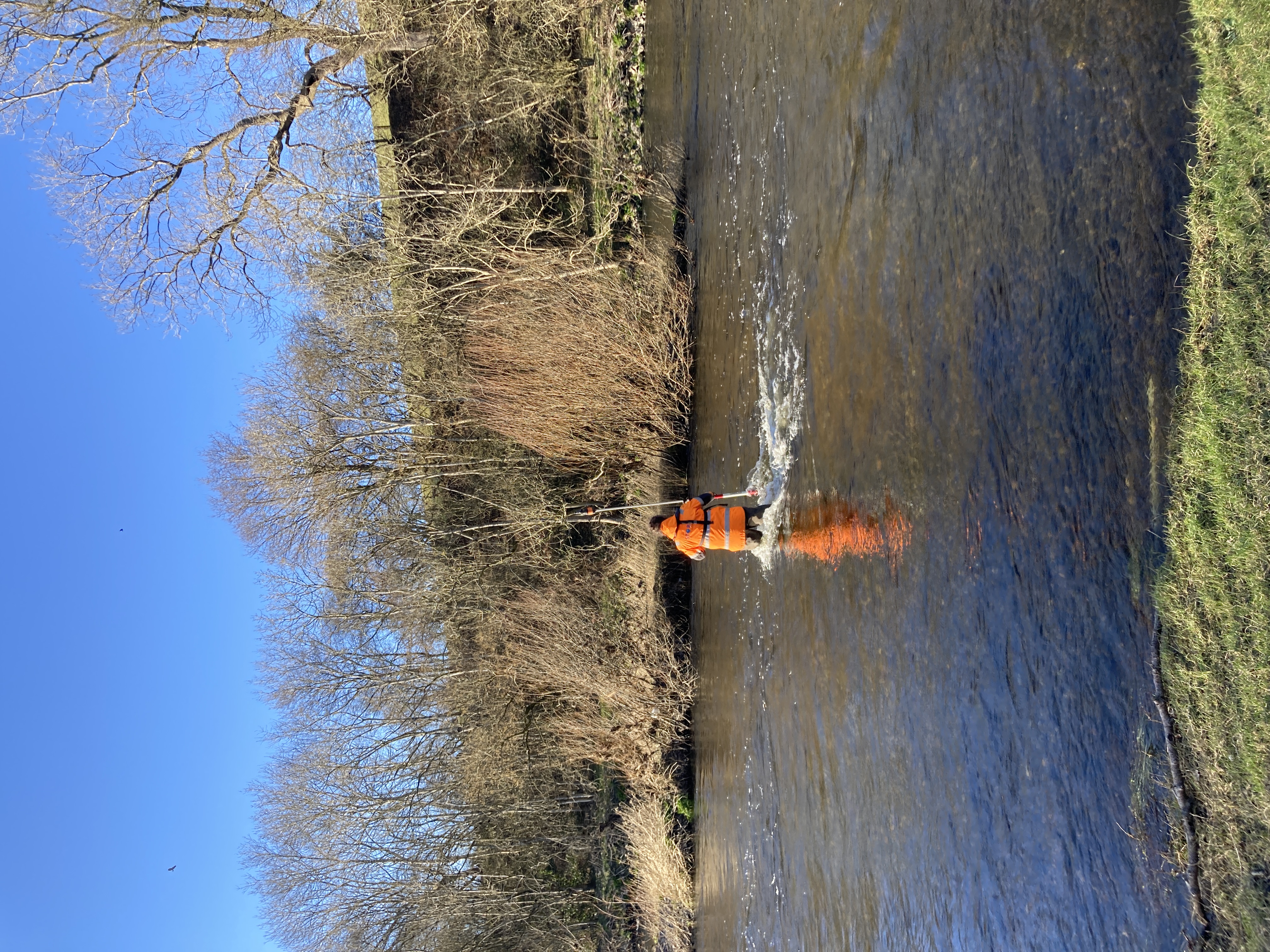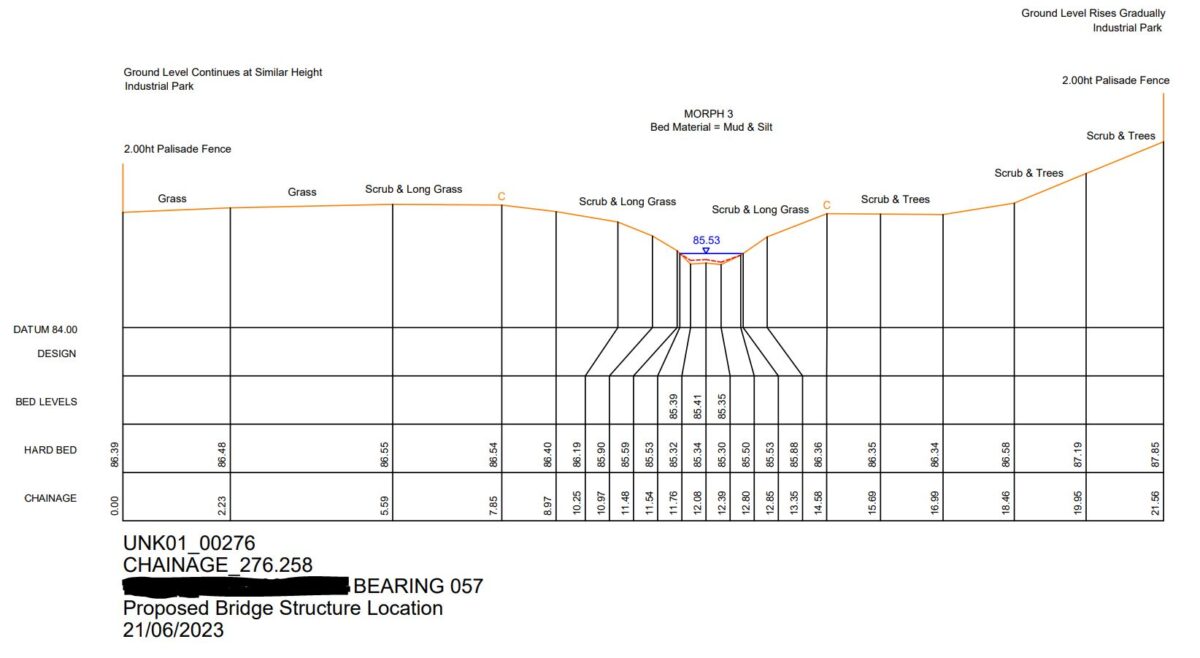
River Condition Assessment for Bridge Design.
The Background
- Client
- AAE Environmental
Our client needed advice for an industrial site which aimed to link two adjacent plots with a proposed new bridge over a “main river”. Part of the planning required that MoRPh surveys were carried out on the river to ensure that the bridge had a neutral or positive impact on the final condition of the river after construction.
The Challenge
To assess the impact of the proposed bridge, a baseline RCA was carried out and then scenarios were modelled from the baseline to assess the impact of the bridge construction on the preliminary river condition assessment score.
A 400m “typical” reach of the river was selected for the assessment which encompassed the proposed bridge location, from this a minimum of 20% of the 400m reach was surveyed using ten MoRPh modules, each module covering a river length of 10m. A MoRPh survey takes a detailed look at river condition indicators such as bank top vegetation, channel cross-sectional geometry, bank face vegetation, sediment and water surface patterns – there at thirty-seven indicators in all, some contribute positive values to the final score, others negative. Two groups of five modules (MoRPh5) were recorded, one at the bridge site and another 200m downstream in a location that would provide a typical representation of the river within the 400m reach. Cross sections were measured using GNSS survey equipment within each survey module to accurately define the channel shape which has a large influence on the final river condition score. A two-person team of water safety trained surveyors entered the river to capture the geometry and inspect the channel related features, all of which would not have been captured had a lone, safety-untrained surveyor observed these indicators from the top of bank. Vegetation mass was at its peak at the time of survey which caused difficulties in moving around the modules and observing ground features, but Storms surveyors are well practiced in these environments from their core-experience in flood mapping and modelling data capture.
MoRPh5 surveys were then combined with a “MoRPh River Type” desktop survey to produce a preliminary river condition score. The MoRPh river type survey considers factors such as braiding, sinuosity, valley confinement and gradient which influence how the MoRPh module indicators react in the river condition assessment algorithm. The baseline river condition assessment preliminary score for this section of river was 0.753 which translates to a final condition score/class of “Moderate”. However, the river geometry informed the surveyor that the channel was “over deep” (disconnected from its flood plain) and therefore the class was downgraded to “Fairly Poor”. From the above you can see that the preliminary score is a numerical value, and the final score is a class. Final scores are normally used for the Biodiversity Net Gain calculation, which was not required in this case, so the preliminary score was used.
The Results
A bridge design was received from the client and a scenario was run within the RCA online software which returned a negative impact from the baseline score. On advice from the surveyor, the bridge design was revised, moving the bridge abutments further away from the bank tops to avoid encroachment into the river channel which was having a negative impact. The new bridge design was tested, and the score (0.729) was improved but continued to have a negative impact on the baseline preliminary RCA score.
Further work was done by the surveyor to mitigate the negative impact of the proposed bridge by creating more scenarios that considered the river type and the influence of the positive and negative indicators within the MoRPh modules. By running twenty different scenarios – such as introducing large woody debris and planting trees, one very feasible scenario was found to uplift the score to 0.834 which surpassed the baseline score by more than 10%.
By using the RCA approach the client has presented to the planning authority a measured solution that mitigates the impact of the proposed bridge and is likely to discharge their planning condition. Storm’s RCA qualified surveyors get the satisfaction of improving the condition of another river – a mission they will never stop pursuing.
Recent News

From Dee to Data: Storm Delivers Dynamic River Data

What’s Driving Our Success in Surveys & Leadership?






